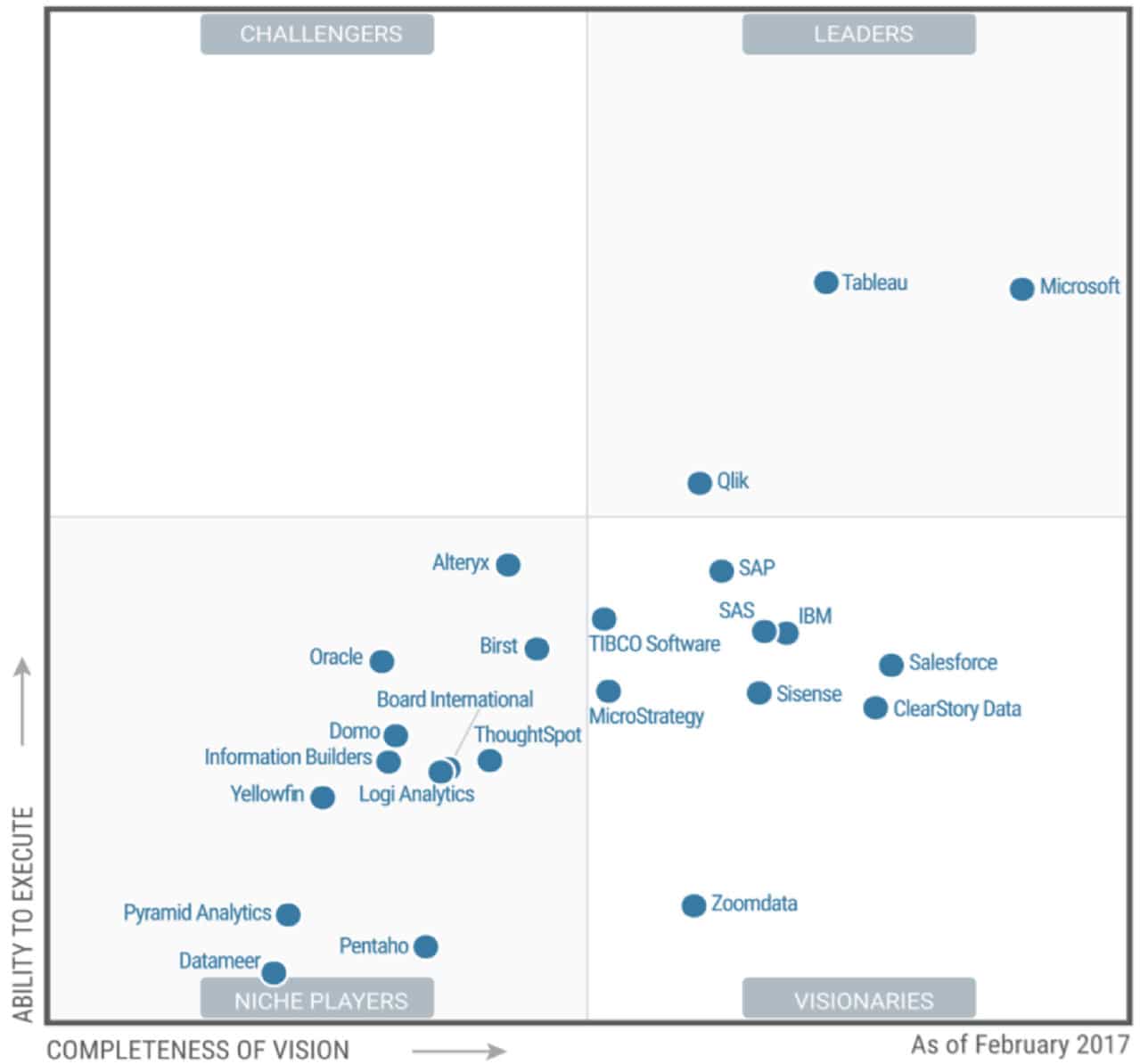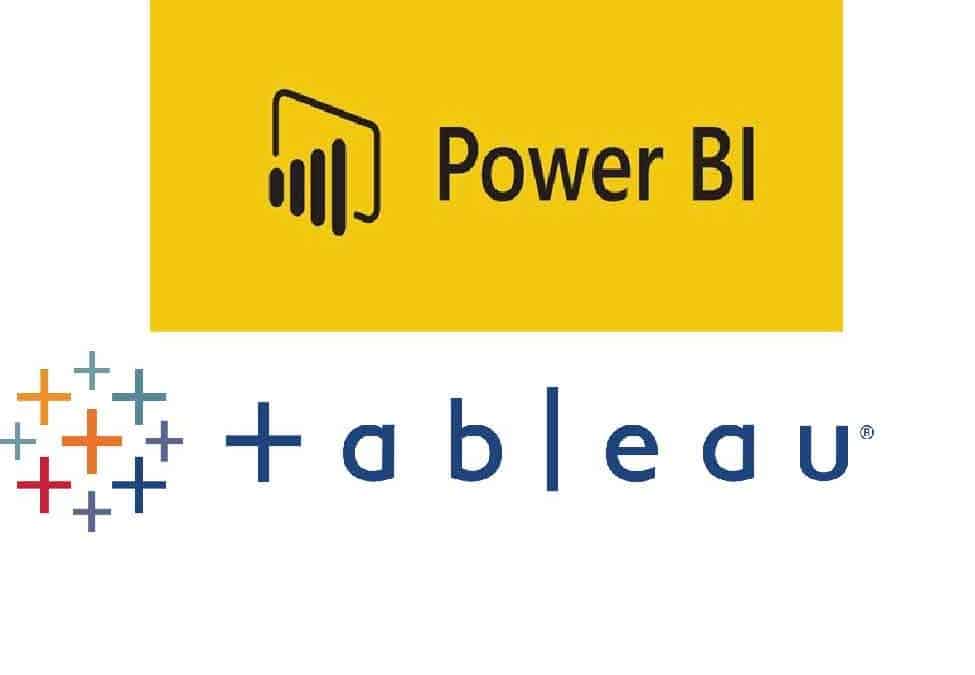
The most important thing to bear in mind when choosing between Power BI and Tableau is that they are both excellent products that are easy to use and have a wide range of functionality. It is rare that we have come across a client who has chosen one over the other, regretted their decision, and wanted to switch to another BI tool. So, the choice is a pretty low-risk one from a functional perspective. In this article, we will list the commonalities between both tools, some of the differentiators that help users decide between Power BI and Tableau, and we will share our approach for quickly testing each tool as a fit for your organisation.
In this article, we will list the commonalities between both tools, some of the differentiators that help users decide between Power BI and Tableau, and we will share our approach for quickly testing each tool as a fit for your organisation.
Common Features and Advantages
Firstly, here are some of the features and advantages common to both Power BI and Tableau:
- Both are easy for business users to work with and require limited IT involvement. Both have good, free online guided learning to get you up and running quickly with the basics.
- Both can be governed and implemented in many different, flexible ways in line with structural requirements.
- Both are secure and provide advanced capability in governing and controlling access to data at a detailed level.
- Both make it easy to share reports, dashboards, and dataset files internally and externally with other users.
- Both provide easy to use data exploration technology, albeit in slightly different ways.
- Both are very viable vendors, with large public support communities and a multitude of consultancies offering professional services.
- Both connect to most data sources relatively easily.
- Both provide options for deploying their solutions on-premises, in the cloud, or in a hybrid environment.
Key Points of Difference
Now, for what differentiates each tool. The intention of this section is to assist in the decision-making process, based on end-user objectives:
- Intuitive Data Analysis: Tableau is the gold standard when it comes to intuitive, easy to use data analysis capability. While Power BI has closed this gap significantly over the past couple of years, there is still a lot more formatting and data preparation required in Power BI to easily change how data is visualised and drilling up or down through different levels of your dataset.
- Cost: Power BI is far cheaper in terms of initial up-front pricing, implementation, and total cost of ownership. Tableau has high pricing and complex packaging of that pricing. Tableau implementations are usually far more expensive as they usually involve a larger data warehouse between source systems and Tableau itself. In contrast, Power BI is a much better fit for smaller or medium organisations, and does not always require such complex data preparation in data warehouse layers. Product pricing is available at https://www.tableau.com/pricing and https://powerbi.microsoft.com/en-us/pricing/.
- Modelling across a variety of data sources: Power BI has a more intuitive data modelling layer than Tableau, and is also more flexible when dealing with more complex models and data from a variety of different sources.
- Custom Visuals: Power BI allows users to build their own customised visuals, along with the ability to download curated visuals from the Office Store. Although visuals in Tableau are very rich, you are limited to the standard visuals available.
- Visualising Large Amounts of Data: Tableau by far exceeds Power BI when visualising large amounts of data. Some visuals in Power BI can be limited to 3,500 records, whereas Tableau has a much larger capacity, depending on the data source and preparation.
- Microsoft Suite: If you are a Microsoft shop, running Dynamics or Office 365, Power BI is a better choice. O365, E5, and ELA all include Power BI Pro licensing in most subscriptions. Power BI also integrates better with the Microsoft stack as a whole and is a better fit when using Microsoft Azure apps or services.
- Beginner/Intermediate User: Power BI’s 5 x 5 (5 seconds to sign up and 5 minutes to “wow”) philosophy makes Power BI a better fit for users starting out with data analysis, or those who would describe themselves as intermediate-level analysts. Executives and business users typically prefer Power BI to Tableau, although this is a generalisation.
- Advanced Analytical User: Tableau is usually preferred by analysts. Tableau is much better at dealing with different data formats and layouts elegantly. Geocoding, hierarchies, and data types are handled automatically in Tableau, whereas you will sometimes need to prepare these manually in Power BI. Adding forecast and trend lines in Tableau is also faster and much more intuitive.
- Release Schedule/Advancement of the Product: I worked with Tableau for a two-year period in my last role (2013 – 2015) and have worked with Power BI over the past two years in my current role. While the pace of change and development in both products has increased since 2015, Power BI by far excels in its ability to add features and respond to community feedback quickly. Power BI is on a monthly release schedule, as opposed to Tableau’s quarterly schedule, and oftentimes, more benefit is released in a Power BI update than a Tableau one.
- Multi-cloud/platform Support: If you are not a Microsoft shop, some of your staff use Macs, or if you are on AWS, Google Cloud, or another cloud provider that is not Microsoft, Tableau is much more usable. Power BI, as a Microsoft product is naturally more embedded into the Microsoft eco-system.
- Data input: Inputting data in Tableau is easier and in-built as standard. This allows for “what-if” analysis and scenario management, which can only be achieved in Power BI via 3rd party vendors or custom visuals.
Approach for testing which is the best fit for you
As you may have guessed from the format of this article, I am not going to make a flat-out recommendation to go with Power BI or Tableau. The best approach when deciding between the two is:
- Select a reporting or analytics requirement in your business that is difficult to achieve, but not impossible. It is good to select a requirement that can be delivered quickly (e.g., in a one or two-week period).
- Define selection criteria and success measures up front.
- Design the solution in detail, as best you can.
- Download free trials of Tableau and Power BI, dependent on which one you are going to build your prototype in first.
- Examine both tools against your selection and success criteria as you build out and test your prototype with users in your organisation.
At the end of this process, you should have enough information and basic experience with both tools to be ready to decide.
I hope you found this article useful. As always, we welcome your comments and feedback feel free to contact us.
[i] Many would argue that Qlik also have a suite of tools that differentiate them as a leader, but for the purposes of this article, we are going to focus on Power BI and Tableau.

